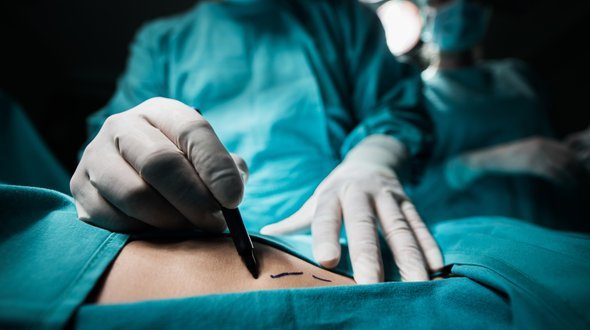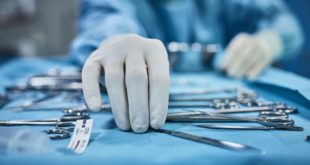Dwight Howard, the Orlando Magic superstar, has been diagnosed with a herniated disk in his lower back and is set to undergo back surgery.
What kind of surgery will he have? What will it be like in the operating room? And what does he have in common with Michael Jackson?
Find out below.
Mr. Howard has already received an epidural injection, likely with steroid medications (not that kind of steroids!) to try to alleviate the pain and decrease the inflammation in the surrounding area.
How does a herniated disk cause pain?
Vertebral disks, in a sense, are the cushions between the bony vertebrae of your spine. They are made of cartilage-like material, and when one area of the disk is weakened, it can bulge outwards. This is called a herniation. If that “bulge” compresses or puts pressure on a nerve root it can cause tremendous pain and other neurologic symptoms. In the low back area, this can cause pain that shoots down the buttocks or leg (sciatica), weakness, numbness, or tingling sensations.
These symptoms can make walking difficult; never mind trying to be an elite athlete getting ready for a push into the playoffs.
The image below shows you what this looks like.
Treatment for herniated disks includes NSAIDS (non-steroidal anti-inflammtory drugs, eg. Ibuprofen), physical therapy, epidural steroid injections, and weeks of time. These epidural injections have apparently not been helpful to Mr. Howard. His condition has been deemed serious enough to require surgery. Though I have no inside knowledge of Mr. Howard’s personal medical history, from publicly available information it sounds like he is going to undergo a discectomy (or microdiscectomy).
Here’s what his experience will probably be like.
Mr. Howard will undergo general anesthesia for this procedure, which will likely take about an hour or so to complete. He will be asked to show up fasted, to help minimize the risk of gastric aspiration. After getting checked in to the facility, an intravenous catheter will be placed. This will be used to give him the medicine that induces general anesthesia, as well as IV fluids, pain medicine, anti-nausea medicine, antibiotics, etc.
Most likely, Mr. Howard will receive propofol to go off to sleep, now often known as the Michael Jackson drug. It should be noted that this drug is very safe when used by anesthesiologists in hospital settings. It is safely used thousands of times every day to induce general anesthesia across the country. Propofol is not indicated as a sleep aid, which is how Michael Jackson was using it. But it is indicated for general anesthesia, which is how Dwight Howard will likely receive it as he drifts off to sleep for his back surgery.
Once asleep, Mr. Howard will have a breathing tube placed past his vocal cords and into his windpipe. This is necessary to control his breathing and deliver anesthesia gases that will keep him under anesthesia for the duration of the procedure. What’s also unique about this type of surgery is that the patient has to be placed in the prone position (face down, laying on the belly).
Here’s what this looks like.
For surgeries in the prone position, the entire OR team takes special care to make sure all pressure points are padded. The head and neck is carefully placed in a neutral position. And special “pillows” are used to make sure the eyes and nose don’t have any pressure on them. The anesthesiologist takes care to regularly monitor the patient’s position throughout the surgery.
Mr. Howard’s size may also be a bit of a challenge. Being about 7 feet tall, the OR staff will have to make sure that their operating room table is big enough to safely handle Dwight’s large frame. Though his weight shouldn’t be an issue, his length could be.
It is a bit of irony that Dwight Howard’s nickname is Superman as he will be assuming the Superman pose for the duration of the surgery.
Once Dwight is in position and the back has been cleaned with sterile solution, the surgeon will access the spine through a small incision in the lower back. He/she will dissect down until the area is reached where the bulging disk is affecting the nerve root. The bulging part of the disc will then be removed, alleviating the pressure on the nerve tissue. Once the surgeon is satisfied the herniating disk material is no longer affecting the nerve root, he will stop and stitch back together the layers of tissue that were opened, including the skin.
When the surgery is complete, the patient will be placed in the supine position (laying on their back) and the anesthesia will be turned “off”. Once the patient is awake and breathing on their own, the breathing tube is removed and the patient is taken to the recovery room. Many surgeons will ask the patient to wiggle their toes as soon as they can follow directions to make sure that no neurologic complications occurred during the procedure.
Though it’s always scary to think of surgery in such a sensitive area like the spine, this is one of the more minor and quicker of the spine surgeries. Though the risks are not great, they include the possibility that the surgery is not completely effective. Other risks include bleeding, infection, risk of damage to spine or nerve roots, and the risks associated with anesthesia.
I’ll be keeping Mr. Howard in my prayers as he goes through his surgical procedure and the recovery that is to follow. Godspeed and quick healing!
If you have any questions about back surgery that weren’t answered, please post them in the comments below.
 Anesthesia Myths: Get the Facts, Lose the Fear | Your #1 Anesthesia Resource in Simple language
Anesthesia Myths: Get the Facts, Lose the Fear | Your #1 Anesthesia Resource in Simple language






